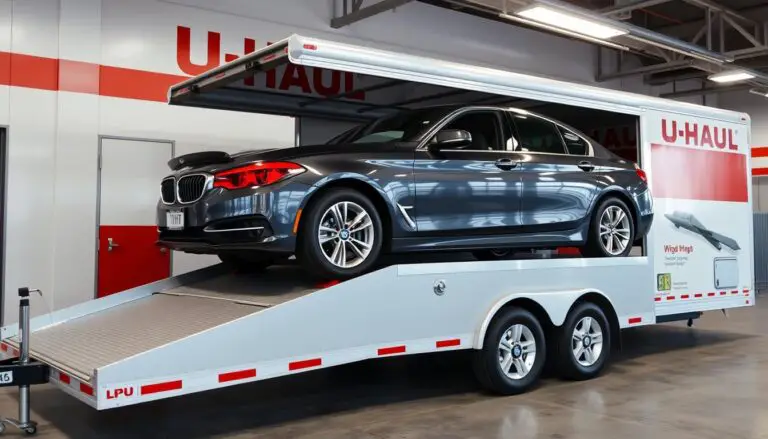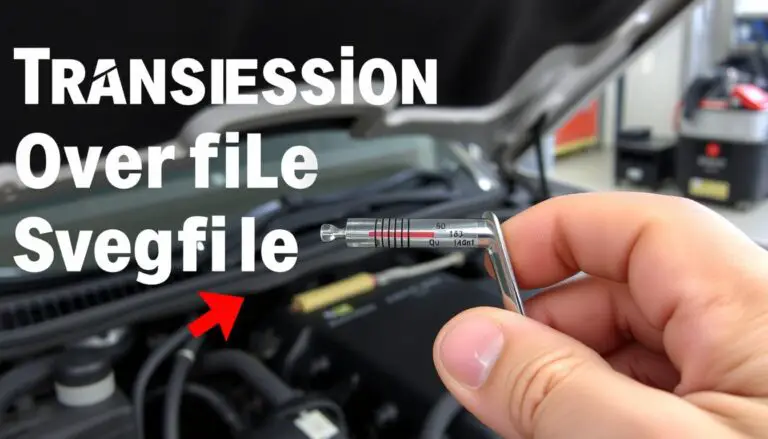Repurposing railroad ties can be a cost-effective and creative solution for various landscaping and construction projects.
These sturdy wooden beams, previously used by railroads, can be transformed into garden borders, retaining walls, or even decorative features, offering a unique aesthetic to outdoor spaces.
By obtaining free railroad ties, individuals can save on material costs while contributing to sustainable practices by reusing materials that would otherwise be discarded.
Key Takeaways
- Identify potential sources for acquiring free railroad ties.
- Understand the process of inspecting and preparing ties for reuse.
- Explore creative ideas for incorporating repurposed ties into landscaping and construction projects.
- Learn about the benefits of using repurposed materials in terms of cost and environmental impact.
- Discover safety considerations when handling railroad ties.
Understanding Railroad Ties and Their Value
Railroad ties have been a crucial component of railway infrastructure for decades, offering a wealth of opportunities for reuse. These wooden or concrete structures are designed to support the rails, providing a stable base for trains to travel on.
What Are Railroad Ties and How They’re Made
Railroad ties, also known as sleepers, are typically made from wood, such as oak or pine, treated with creosote to extend their lifespan. The manufacturing process involves cutting and shaping the wood to precise dimensions, followed by treatment to resist rot and insect damage. Properly maintained ties can last for many years, making them a valuable resource for repurposing.
Common Uses for Repurposed Ties in Landscaping and Construction
Repurposed railroad ties are highly valued in landscaping and construction for their durability and rustic charm. They are often used to create retaining walls, garden borders, and outdoor furniture. The ties can also be used for building structures, such as bridges and walkways, due to their strength and resistance to weathering.
The Cost Savings of Obtaining Free Ties
Acquiring free railroad ties can result in significant cost savings for landscaping and construction projects. By repurposing ties that would otherwise be discarded, individuals can reduce their material costs while also contributing to sustainable practices. The financial benefits are substantial, making it an attractive option for those looking to complete projects on a budget.
Free Railroad Ties? Where? How?
Obtaining free railroad ties can be a straightforward process if you know where to look and who to contact. The key is to identify sources that are likely to have ties they are willing to give away for free.
Railroad Companies as Primary Sources
Railroad companies are a primary source for free railroad ties. They frequently replace ties as part of their maintenance routines, and these discarded ties can often be obtained for free if you’re willing to pick them up. It’s essential to establish a connection with local railroad company representatives to inquire about their tie replacement schedules and policies on giving away used ties.
Railroad Maintenance Yards and Replacement Projects
Visiting railroad maintenance yards during replacement projects can be a fruitful way to acquire free ties. Maintenance yards often have large quantities of used ties that are being replaced and are looking for someone to take them away. Building a relationship with yard personnel can provide you with valuable leads on when and where ties are available.

Construction Sites and Demolition Projects
Construction and demolition sites can also be a source of free railroad ties, especially if the site involves the renovation or demolition of structures made with railroad ties. Keep an eye on local construction projects and inquire about potential tie availability.
Online Marketplaces and Community Boards
Utilizing online marketplaces and community boards can also yield results. Websites like Craigslist or local online classifieds often have people giving away materials, including railroad ties, for free. Be cautious and ensure you’re dealing with reputable individuals.
By exploring these avenues and being proactive, you can successfully obtain free railroad ties for your projects. Remember to always follow legal and safety guidelines when collecting and using railroad ties.
Preparing to Collect Railroad Ties
Before you start collecting railroad ties, it’s crucial to prepare adequately to ensure a successful and safe experience. This preparation involves several key aspects that will make the process more efficient and enjoyable.
Research and Planning Your Collection Strategy
Start by researching local railroad companies, their maintenance yards, and construction sites where ties might be available for collection. Understanding the sources and potential quantities available is vital. Plan your collection strategy by identifying the best locations and timing your visits to coincide with tie replacements or construction activities.
Tools and Equipment You’ll Need
Having the right tools and equipment is essential for safely collecting and transporting railroad ties. You’ll need gloves, a pry bar, a dolly or hand truck, and potentially a vehicle for transportation. Ensure your equipment is in good condition to handle the weight and size of the ties.
Setting Up Storage Space at Home
Before bringing home your collected ties, prepare a suitable storage area. This involves clearing space, laying down a base to prevent contact with soil, and ensuring the area is well-ventilated.
Proper Stacking and Organization
Stack ties in a way that prevents them from toppling over, and organize them by size and condition. This makes it easier to access the ties when you’re ready to use them.
Weather Protection Considerations
Consider protecting your ties from the elements. Covering them or storing them under a shelter can help maintain their quality over time.
Contacting Railroad Companies Effectively
To get started with acquiring free railroad ties, it’s crucial to reach out to the right people at railroad companies. This involves a strategic approach to ensure a positive response.
Identifying Local Railroad Operations in Your Area
Begin by identifying local railroad operations in your vicinity. You can do this by searching online or checking local business directories. Many railroad companies have their own websites that provide contact information and details about their operations.
Finding the Right Contact Person
Once you’ve identified local railroad companies, the next step is to find the right contact person. Typically, this would be someone in their maintenance or operations department. Look for job titles like “Maintenance Manager” or “Yard Supervisor.”

Crafting a Professional Request
When making your request, it’s essential to be professional and courteous. Introduce yourself, explain your project or the intended use of the railroad ties, and politely ask if they have any ties available for free. Be sure to include your contact information for a response.
Following Up Without Being Pushy
If you don’t receive a response within a couple of weeks, a follow-up email or phone call is appropriate. Reiterate your interest and inquire if there’s any update on the availability of free ties. Be patient and polite to maintain a positive relationship.
| Step | Action | Notes |
|---|---|---|
| 1 | Identify Local Railroad Operations | Search online or check local directories |
| 2 | Find the Right Contact Person | Look for Maintenance or Operations personnel |
| 3 | Craft a Professional Request | Be clear about your intended use |
| 4 | Follow Up | Wait a couple of weeks before following up |
Legal Considerations and Permissions
Understanding the legal aspects of acquiring railroad ties is essential for a hassle-free experience. Before diving into the process, it’s crucial to be aware of the legal considerations and permissions required.
Understanding Ownership Rights of Discarded Ties
Railroad companies typically own the ties until they are discarded. It’s essential to obtain permission from the railroad company before collecting ties. Some companies may have specific procedures for handling and disposing of old ties.
Environmental Regulations Regarding Treated Wood
Treated railroad ties are subject to environmental regulations due to the chemicals used in their treatment. For instance, creosote-treated ties are regulated by the EPA. You can review the Croton Bay Railroad Tie Removal Study for detailed guidelines on handling treated ties.
| Regulation | Description | Authority |
|---|---|---|
| EPA Regulations | Guidelines for handling creosote-treated wood | Environmental Protection Agency |
| Local Ordinances | Restrictions on using railroad ties in landscaping | Local Government |
| Permit Requirements | Permits needed for collecting and transporting ties | State/County Authorities |
Local Restrictions on Using Railroad Ties
Some local governments have specific ordinances regarding the use of railroad ties in landscaping and construction. It’s vital to check with local authorities to ensure compliance.
Required Permits for Collection and Transportation
Depending on the location and quantity of ties, permits may be required for their collection and transportation. Researching and obtaining the necessary permits will help avoid legal issues.
Safety Precautions When Handling Railroad Ties
Safety should be the top priority when dealing with railroad ties, especially those treated with creosote. Handling these ties requires careful attention to potential hazards to prevent injuries and exposure to harmful substances.
Chemical Hazards in Creosote-Treated Ties
Creosote-treated railroad ties contain chemicals that can be hazardous to health. Creosote is a toxic substance used to preserve wood, and it can cause skin irritation, allergic reactions, and other health issues upon contact. It’s essential to understand these risks before handling such ties.
Proper Protective Equipment for Handling
Wearing appropriate protective equipment is crucial when handling railroad ties. This includes gloves to prevent skin contact, safety glasses to protect eyes from debris, and a dust mask to avoid inhaling harmful particles. Proper protective gear significantly reduces the risk of injury and exposure to toxic substances.
Safe Lifting and Moving Techniques
Safe lifting and moving techniques are vital to prevent physical injuries. It’s recommended to lift with your knees, not your back, and to avoid twisting or turning while carrying heavy ties. When moving ties, using appropriate tools or machinery can help minimize manual handling risks.
Cleaning and Preparing Ties for Safe Use
Before using railroad ties in landscaping or construction, cleaning them can help reduce the risk of exposure to creosote and other contaminants. Power washing with appropriate safety gear can remove surface residues. It’s also advisable to seal or coat the ties to minimize future leaching of chemicals.
| Safety Measure | Description | Benefit |
|---|---|---|
| Protective Equipment | Gloves, safety glasses, dust mask | Reduces risk of injury and exposure |
| Safe Lifting Techniques | Lift with knees, avoid twisting | Prevents physical injuries |
| Cleaning Ties | Power washing, sealing/coating | Reduces chemical exposure risk |
Conclusion
Obtaining free railroad ties can be a rewarding experience, especially when you see them transformed into unique DIY projects. By following the steps outlined in this guide, you can acquire the materials needed for your next landscaping or construction endeavor without breaking the bank.
From understanding the value of railroad ties to contacting railroad companies and ensuring safety precautions, you’ve gained the knowledge necessary to embark on your DIY journey. With the right tools and a bit of creativity, you can turn discarded ties into functional and beautiful pieces for your home or garden.
As you start your project, remember to stay within local regulations and safety guidelines. With persistence and the right information, obtaining free railroad ties can be the first step in creating something truly special. So, get ready to roll up your sleeves and bring your DIY projects to life.
FAQ
What are railroad ties made of?
Railroad ties are typically made from wood, often treated with creosote or other preservatives to extend their lifespan. Some ties may also be made from composite materials or steel.
Are creosote-treated railroad ties safe to use?
Creosote-treated railroad ties can pose health risks due to the chemicals used in the treatment process. It’s essential to handle them with caution, wearing protective gear, and to follow proper safety guidelines when using them in projects.
Can I use railroad ties for gardening projects?
Yes, railroad ties can be repurposed for gardening projects, such as raised beds or retaining walls. However, it’s crucial to ensure that the ties are properly cleaned and prepared to avoid contaminating the soil.
How do I find railroad ties for free?
You can find free railroad ties by contacting local railroad companies, visiting maintenance yards, monitoring construction and demolition sites, and checking online marketplaces and community boards.
Do I need a permit to collect railroad ties?
The need for a permit to collect railroad ties varies depending on local regulations and the source of the ties. It’s essential to check with local authorities and the railroad company to determine if any permits are required.
Can I use railroad ties for building a retaining wall?
Yes, railroad ties can be used to build a retaining wall. However, it’s crucial to follow proper construction techniques and ensure that the wall is designed to withstand the weight and pressure of the soil.
How do I store railroad ties to maintain their quality?
To maintain the quality of railroad ties, store them in a dry, well-ventilated area, protected from the elements. Proper stacking and organization are also essential to prevent damage and rot.
Are there any environmental concerns associated with using railroad ties?
Yes, there are environmental concerns associated with using railroad ties, particularly those treated with creosote. It’s essential to follow proper handling and disposal procedures to minimize the risk of environmental contamination.


